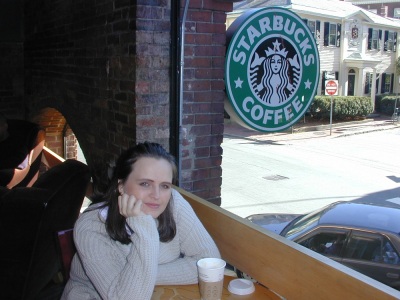Dear Starbucks,
We’ve been close friends for years. I see you almost every day, some days more than once. I’ve visited you in over half a dozen countries, and there are probably half a dozen locations in Silicon Valley where you know me and my drink by name. I’ll be there for you when you need me, and I know you’ll be there for me when I need you.
That’s why we need to talk. About your mobile app and the app marketing it uses.
Starbucks Mobile is a Homescreen App
I use your mobile app every day. I love that it works in different countries. I love that it auto-reloads, and it (finally) gives me free drinks without the annoyance of postcards in the mail. And I will tell you, the Starbucks store-finder is a life saver in more ways than one.
It’s on the homescreen of my iPhone 5. Not in a folder. 2nd row. It’s #8 with a bullet.
I want you to know me
There are barristas at five different Starbucks who know the drink I normally order. The one in Los Altos actually knows the drink I usually order for my wife too. And yet, after over 1000 orders, you still don’t know my favorite drink?
The Starbucks app should:
- Know what drinks I’ve ordered, and rank them by the number of times I’ve ordered them.
- Know what I’ve tried, and what I should try.
Your best barristas try to know their customers & their drinks. Why not your app?
I want to know where I’ve been, and where I’m going
I’ve been to dozens of different Starbucks. If I drop the kids off a school, I might grab my morning drink at the Starbucks on Alma. If I’m late, I might go straight to the office, and walk to the one on University. If I’m heading to San Francisco, I’ll stop at the one in Los Altos before jumping on 280.
The Starbucks app should:
- Have a hot list of Starbucks I’ve visited, ranked either by recency or by frequency
- For each visited Starbucks, show me when I visited them last. Show me what I ordered.
- If I break pattern, it’s even OK to suggest a drink to me.
You could know all of this, of course. But you don’t care.
I want you to care about my opinion
On most days, your barristas do a great job. But did you know that the line at the Los Altos location is really long during the week? Or that the Starbucks on Alma is the fastest?
Did you know that sometimes, your barristas see me, place my order, and have it made before I get to the head of the line?
I want to tell you these things. I want to let you know when your barristas are amazing. I want to tip them. I want them to get promotions. I want them to know they are appreciated.
The Starbucks app should:
- Let me tell you when the line is long (like Waze)
- Let me tell you when I waited a long time for my drink
- Let me tell you when my drink was made poorly
- Let me give kudos when my drink came quickly
- Let me tip when my drink came quickly
- Rank drinks and user reviews (like Movie Box)
Your mobile app eliminates tipping, and devalues my relationship with the barristas. It should be the other way around.
I want you to save me time
I love the Starbucks experience. But the truth is, I go to Starbucks for four different reasons, in order of frequency:
- I go for my daily coffee on the way to work.
- I walk to Starbucks for a meeting.
- I go to Starbucks as part of a social destination.
- I go to Starbucks to relax and read.
The problem is, you seem to only care about the last 3. For the first use case, I just don’t have time to kill. I’m alone, and I need to get in and out as quickly as possible. I love you, but sometimes I just don’t have time for the experience. I promise, we’ll catch up later.
The Starbucks app should:
- Know my favorite orders
- Let me order & pay for them before I get in the car
- Have them ready for pickup when I arrive
- Let me know when the order is ready
If you are worried about the casual user not getting the “Starbucks experience”, I understand. Maybe this should be a perk for being a frequent customer?
Last Thoughts
Since we’re being open and honest, I might as well tell you what no one else is. Just stop with the nonsense with the app of the day, song of the day. You are giving me a red badge on my app EVERY DAY for something that no one wants. It’s beneath you. You are better than that.
Notify me because you have a new drink, and since I’m such a loyal customer, I get one free.
Notify me because 95% of the time I’ve visited Starbucks on Wednesday by 10am, and check to see if I want one today on the house?
I don’t want to hear about wireless charging mats. Seriously.
I love you Starbucks. Tell me you love me back.









